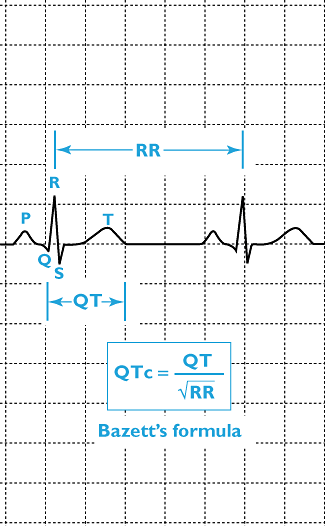Drug- and non-drug-associated QT interval prolongation
- PMID: 20642543
- PMCID: PMC2909803
- DOI: 10.1111/j.1365-2125.2010.03660.x
Drug- and non-drug-associated QT interval prolongation
Abstract
Sudden cardiac death is among the most common causes of cardiovascular death in developed countries. The majority of sudden cardiac deaths are caused by acute ventricular arrhythmia following repolarization disturbances. An important risk factor for repolarization disturbances is use of QT prolonging drugs, probably partly explained by gene-drug interactions. In this review, we will summarize QT interval physiology, known risk factors for QT prolongation, including drugs and the contribution of pharmacogenetics. The long QT syndrome can be congenital or acquired. The congenital long QT syndrome is caused by mutations in ion channel subunits or regulatory protein coding genes and is a rare monogenic disorder with a mendelian pattern of inheritance. Apart from that, several common genetic variants that are associated with QT interval duration have been identified. Acquired QT prolongation is more prevalent than the congenital form. Several risk factors have been identified with use of QT prolonging drugs as the most frequent cause. Most drugs that prolong the QT interval act by blocking hERG-encoded potassium channels, although some drugs mainly modify sodium channels. Both pharmacodynamic as well as pharmacokinetic mechanisms may be responsible for QT prolongation. Pharmacokinetic interactions often involve drugs that are metabolized by cytochrome P450 enzymes. Pharmacodynamic gene-drug interactions are due to genetic variants that potentiate the QT prolonging effect of drugs. QT prolongation, often due to use of QT prolonging drugs, is a major public health issue. Recently, common genetic variants associated with QT prolongation have been identified. Few pharmacogenetic studies have been performed to establish the genetic background of acquired QT prolongation but additional studies in this newly developing field are warranted.
Figures



References
-
- Myerburg RJ, Kessler KM, Castellanos A. Sudden cardiac death: epidemiology, transient risk, and intervention assessment. Ann Intern Med. 1993;119:1187–97. - PubMed
-
- Myerburg RJ, Interian A, Jr, Mitrani RM, Kessler KM, Castellanos A. Frequency of sudden cardiac death and profiles of risk. Am J Cardiol. 1997;80:10F–19F. - PubMed
-
- Gorgels AP, Gijsbers C, de Vreede-Swagemakers J, Lousberg A, Wellens HJ. Out-of-hospital cardiac arrest – the relevance of heart failure. The Maastricht Circulatory Arrest Registry. Eur Heart J. 2003;24:1204–9. - PubMed
-
- Myerburg RJ, Castellanos A. Emerging paradigms of the epidemiology and demographics of sudden cardiac arrest. Heart Rhythm. 2006;3:235–9. - PubMed
-
- Josephson M, Wellens HJ. Implantable defibrillators and sudden cardiac death. Circulation. 2004;109:2685–91. - PubMed
Publication types
MeSH terms
Substances
LinkOut - more resources
Full Text Sources
Other Literature Sources
Medical

